The Disappearance of Mr. Davenheim
Part Two (2)
Catagory:Reading
Author:AGATHA CHRISTIE
Posted Date:01/30/2025
Posted By:utopia online
“Any other clothes missing from the house?”
“No, his valet is quite positive on that point. The rest of his wardrobe is intact. There’s more. We’ve arrested Lowen. One of the maids, whose business it is to fasten the bedroom windows, declares that she saw Lowen coming towards the study through the rose-garden about a quarter past six. That would be about ten minutes before he left the house.”
“What does he himself say to that?”
“Denied first of all that he had ever left the study. But the maid was positive, and he pretended afterwards that he had forgotten just stepping out of the window to examine an unusual species of rose. Rather a weak story! And there’s fresh evidence against him come to light. Mr. Davenheim always wore a thick gold ring set with a solitaire diamond on the little finger of his right hand. Well, that ring was pawned in London on Saturday night by a man called Billy Kellett! He’s already known to the police—did three months last autumn for lifting an old gentleman’s watch. It seems he tried to pawn the ring at no less than five different places, succeeded at the last one, got gloriously drunk on the proceeds, assaulted a policeman, and was run in in consequence. I went to Bow Street with Miller and saw him. He’s sober enough now, and I don’t mind admitting we pretty well frightened the life out of him, hinting he might be charged with murder. This is his yarn, and a very queer one it is.
“He was at Entfield races on Saturday, though I dare say scarfpins was his line of business, rather than betting. Anyway, he had a bad day, and was down on his luck. He was tramping along the road to Chingside, and sat down in a ditch to rest just before he got into the village. A few minutes later he noticed a man coming along the road to the village, ‘dark-complexioned gent, with a big moustache, one of them city toffs,’ is his description of the man.
“Kellett was half concealed from the road by a heap of stones. Just before he got abreast of him, the man looked quickly up and down the road, and seeing it apparently deserted he took a small object from his pocket and threw it over the hedge. Then he went on towards the station. Now, the object he had thrown over the hedge had fallen with a slight ‘chink’ which aroused the curiosity of the human derelict in the ditch. He investigated and, after a short search, discovered the ring! That is Kellett’s story. It’s only fair to say that Lowen denies it utterly, and of course the word of a man like Kellett can’t be relied upon in the slightest. It’s within the bounds of possibility that he met Davenheim in the lane and robbed and murdered him.”
Poirot shook his head.
“Very improbable, mon ami. He had no means of disposing of the body. It would have been found by now. Secondly, the open way in which he pawned the ring makes it unlikely that he did murder to get it. Thirdly, your sneak-thief is rarely a murderer. Fourthly, as he has been in prison since Saturday, it would be too much of a coincidence that he is able to give so accurate a description of Lowen.”
Japp nodded. “I don’t say you’re not right. But all the same, you won’t get a jury to take much note of a jailbird’s evidence. What seems odd to me is that Lowen couldn’t find a cleverer way of disposing of the ring.”
Poirot shrugged his shoulders. “Well, after all, if it were found in the neighbourhood, it might be argued that Davenheim himself had dropped it.”
“But why remove it from the body at all?” I cried.
“There might be a reason for that,” said Japp. “Do you know that just beyond the lake, a little gate leads out on to the hill, and not three minutes’ walk brings you to—what do you think?—a lime kiln.”
“Good heavens!” I cried. “You mean that the lime which destroyed the body would be powerless to affect the metal of the ring?”
“Exactly.”
“It seems to me,” I said, “that that explains everything. What a horrible crime!”
By common consent we both turned and looked at Poirot. He seemed lost in reflection, his brow knitted, as though with some supreme mental effort. I felt that at last his keen intellect was asserting itself. What would his first words be? We were not long left in doubt. With a sigh, the tension of his attitude relaxed, and turning to Japp, he asked:
“Have you any idea, my friend, whether Mr. and Mrs. Davenheim occupied the same bedroom?”
The question seemed so ludicrously inappropriate that for a moment we both stared in silence. Then Japp burst into a laugh. “Good Lord, Monsieur Poirot, I thought you were coming out with something startling. As to your question, I’m sure I don’t know.”
“You could find out?” asked Poirot with curious persistence.
“Oh, certainly—if you really want to know.”
“Merci, mon ami. I should be obliged if you would make a point of it.”
Japp stared at him a few minutes longer, but Poirot seemed to have forgotten us both. The detective shook his head sadly at me, and murmuring, “Poor old fellow! War’s been too much for him!” gently withdrew from the room.
As Poirot still seemed sunk in a daydream, I took a sheet of paper, and amused myself by scribbling notes upon it. My friend’s voice aroused me. He had come out of his reverie, and was looking brisk and alert.
“Que faites-vous là, mon ami?”
“I was jotting down what occurred to me as the main points of interest in this affair.”
“You become methodical—at last!” said Poirot approvingly.
I concealed my pleasure. “Shall I read them to you?”
“By all means.”
I cleared my throat.
“‘One: All the evidence points to Lowen having been the man who forced the safe.
“‘Two: He had a grudge against Davenheim.
“‘Three: He lied in his first statement that he had never left the study.
“‘Four: If you accept Billy Kellett’s story as true, Lowen is unmistakably implicated.’”
I paused. “Well?” I asked, for I felt that I had put my finger on all the vital facts.
Poirot looked at me pityingly, shaking his head very gently. “Mon pauvre ami! But it is that you have not the gift! The important detail, you appreciate him never! Also, your reasoning is false.”
“How?”
“Let me take your four points.
“One: Mr. Lowen could not possibly know that he would have the chance to open the safe. He came for a business interview. He could not know beforehand that Mr. Davenheim would be absent posting a letter, and that he would consequently be alone in the study!”
“He might have seized his opportunity,” I suggested.
“And the tools? City gentlemen do not carry round housebreaker’s tools on the off chance! And one could not cut into that safe with a penknife, bien entendu!”
“Well, what about Number Two?”
“You say Lowen had a grudge against Mr. Davenheim. What you mean is that he had once or twice got the better of him. And presumably those transactions were entered into with the view of benefiting himself. In any case you do not as a rule bear a grudge against a man you have got the better of—it is more likely to be the other way about. Whatever grudge there might have been would have been on Mr. Davenheim’s side.”
“Well, you can’t deny that he lied about never having left the study?”
“No. But he may have been frightened. Remember, the missing man’s clothes had just been discovered in the lake. Of course, as usual, he would have done better to speak the truth.”
“And the fourth point?”
“I grant you that. If Kellett’s story is true, Lowen is undeniably implicated. That is what makes the affair so very interesting.”
“Then I did appreciate one vital fact?”
“Perhaps—but you have entirely overlooked the two most important points, the ones which undoubtedly hold the clue to the whole matter.”
“And pray, what are they?”
“One, the passion which has grown upon Mr. Davenheim in the last few years for buying jewellery. Two, his trip to Buenos Ayres last autumn.”
“Poirot, you are joking!”
“I am most serious. Ah, sacred thunder, but I hope Japp will not forget my little commission.”
But the detective, entering into the spirit of the joke, had remembered it so well that a telegram was handed to Poirot about eleven o’clock the next day. At his request I opened it and read it out:
“‘Husband and wife have occupied separate rooms since last winter.’”
“Aha!” cried Poirot. “And now we are in mid June! All is solved!”
I stared at him.
“You have no moneys in the bank of Davenheim and Salmon, mon ami?”
“No,” I said, wondering. “Why?”
“Because I should advise you to withdraw it—before it is too late.”
“Why, what do you expect?”
“I expect a big smash in a few days—perhaps sooner. Which reminds me, we will return the compliment of a dépêche to Japp. A pencil, I pray you, and a form. Voilà! ‘Advise you to withdraw any money deposited with firm in question.’ That will intrigue him, the good Japp! His eyes will open wide—wide! He will not comprehend in the slightest—until to-morrow, or the next day!”
I remained sceptical, but the morrow forced me to render tribute to my friend’s remarkable powers. In every paper was a huge headline telling of the sensational failure of the Davenheim bank. The disappearance of the famous financier took on a totally different aspect in the light of the revelation of the financial affairs of the bank.
Before we were half-way through breakfast, the door flew open and Japp rushed in. In his left hand was a paper; in his right was Poirot’s telegram, which he banged down on the table in front of my friend.
“How did you know, Monsieur Poirot? How the blazes could you know?”
Poirot smiled placidly at him. “Ah, mon ami, after your wire, it was a certainty! From the commencement, see you, it struck me that the safe burglary was somewhat remarkable. Jewels, ready money, bearer bonds—all so conveniently arranged for—whom? Well, the good Monsieur Davenheim was of those who ‘look after Number One’ as your saying goes! It seemed almost certain that it was arranged for—himself! Then his passion of late years for buying jewellery! How simple! The funds he embezzled, he converted into jewels, very likely replacing them in turn with paste duplicates, and so he put away in a safe place, under another name, a considerable fortune to be enjoyed all in good time when every one has been thrown off the track. His arrangements completed, he makes an appointment with Mr. Lowen (who has been imprudent enough in the past to cross the great man once or twice), drills a hole in the safe, leaves orders that the guest is to be shown into the study, and walks out of the house—where?” Poirot stopped, and stretched out his hand for another boiled egg. He frowned. “It is really insupportable,” he murmured, “that every hen lays an egg of a different size! What symmetry can there be on the breakfast table? At least they should sort them in dozens at the shop!”
“Never mind the eggs,” said Japp impatiently. “Let ’em lay ’em square if they like. Tell us where our customer went to when he left The Cedars—that is, if you know!”
“Eh bien, he went to his hiding-place. Ah, this Monsieur Davenheim, there may be some malformation in his grey cells, but they are of the first quality!”
“Do you know where he is hiding?”
“Certainly! It is most ingenious.”
“For the Lord’s sake, tell us, then!”
Poirot gently collected every fragment of shell from his plate, placed them in the egg-cup, and reversed the empty egg-shell on top of them. This little operation concluded, he smiled on the neat effect, and then beamed affectionately on us both.
“Come, my friends, you are men of intelligence. Ask yourselves the question which I asked myself. ‘If I were this man, where should I hide?’ Hastings, what do you say?”
“Well,” I said, “I’m rather inclined to think I’d not do a bolt at all. I’d stay in London—in the heart of things, travel by tubes and buses; ten to one I’d never be recognized. There’s safety in a crowd.”
Poirot turned inquiringly to Japp.
“I don’t agree. Get clear away at once—that’s the only chance. I would have had plenty of time to prepare things beforehand. I’d have a yacht waiting, with steam up, and I’d be off to one of the most out-of-the-way corners of the world before the hue and cry began!”
We both looked at Poirot. “What do you say, monsieur?”
For a moment he remained silent. Then a very curious smile flitted across his face.
“My friends, if I were hiding from the police, do you know where I should hide? In a prison!”
“What?”
“You are seeking Monsieur Davenheim in order to put him in prison, so you never dream of looking to see if he may not be already there!”
“What do you mean?”
“You tell me Madame Davenheim is not a very intelligent woman. Nevertheless I think that if you took her to Bow Street and confronted her with the man Billy Kellett, she would recognize him! In spite of the fact that he has shaved his beard and moustache and those bushy eyebrows, and has cropped his hair close. A woman nearly always knows her husband, though the rest of the world may be deceived!”
“Billy Kellett? But he’s known to the police!”
“Did I not tell you Davenheim was a clever man? He prepared his alibi long beforehand. He was not in Buenos Ayres last autumn—he was creating the character of Billy Kellett, ‘doing three months,’ so that the police should have no suspicions when the time came. He was playing, remember, for a large fortune, as well as liberty. It was worth while doing the thing thoroughly. Only——”
“Yes?”
“Eh bien, afterwards he had to wear a false beard and wig, had to make up as himself again, and to sleep with a false beard is not easy—it invites detection! He cannot risk continuing to share the chamber of madame his wife. You found out for me that for the last six months, or ever since his supposed return from Buenos Ayres, he and Mrs. Davenheim occupied separate rooms. Then I was sure! Everything fitted in. The gardener who fancied he saw his master going round to the side of the house was quite right. He went to the boathouse, donned his ‘tramp’ clothes, which you may be sure had been safely hidden from the eyes of his valet, dropped the others in the lake, and proceeded to carry out his plan by pawning the ring in an obvious manner, and then assaulting a policeman, getting himself safely into the haven of Bow Street, where nobody would ever dream of looking for him!”
“It’s impossible,” murmured Japp.
“Ask Madame,” said my friend, smiling.
The next day a registered letter lay beside Poirot’s plate. He opened it, and a five-pound note fluttered out. My friend’s brow puckered.
“Ah, sacré! But what shall I do with it? I have much remorse! Ce pauvre Japp! Ah, an idea! We will have a little dinner, we three! That consoles me. It was really too easy. I am ashamed. I, who would not rob a child—mille tonnerres! Mon ami, what have you, that you laugh so heartily?”


.jpg)














 👁 :208
👁 :208
 👁 :233
👁 :233
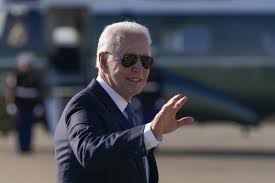 👁 :3
👁 :3
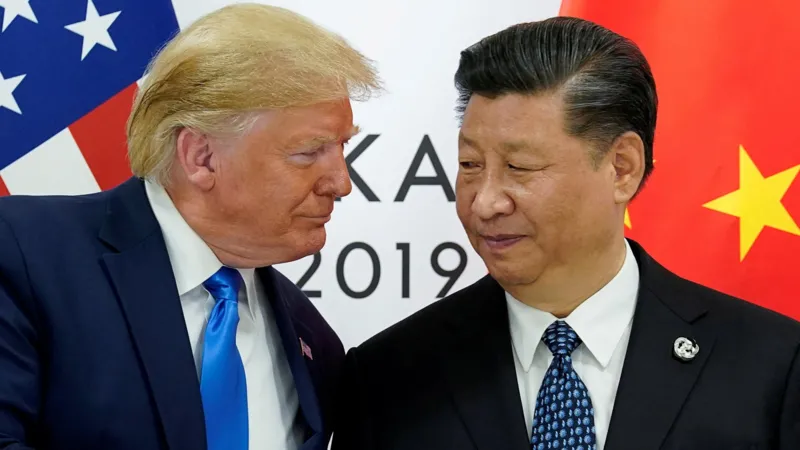 👁 :2
👁 :2
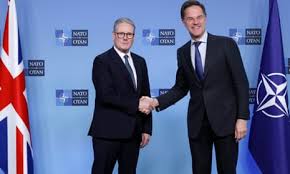 👁 :2
👁 :2
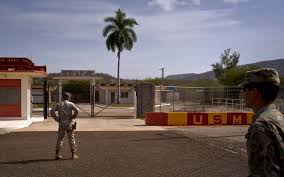 👁 :12
👁 :12
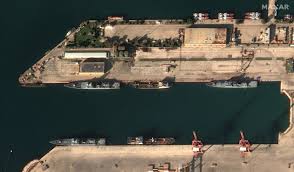 👁 :4
👁 :4
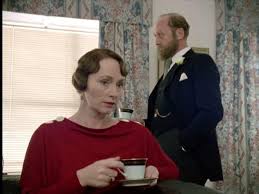 👁 :32
👁 :32